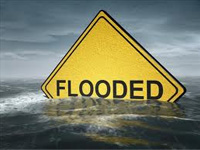Shining a light on accommodation’s nightmare infestations
They may be the size of a pin-head, but bed bugs have been known to induce hysteria in the most hardened hoteliers.
These itch-provoking pests have been on the march in increasing numbers globally over the past year, and tend to be detected in greater numbers following major sporting events – such as the Commonwealth Games.
After the London and Sydney Olympics, both host cities were identified as centres of bed bug infestations.
Australia should be on high alert for bed bugs right now – and we’ve got the tips to help you seek them out.
- Inspect the entire room
A common misconception about bed bugs is that they are only found on bed frames and mattresses. Bed bugs will hide in small cracks and crevices near the bed, in skirting boards or bedside cabinets.
When checking a hotel room for bed bugs, housekeeping staff should also check:
- along the seams, inside covers and around the zips of sofas and chairs
- where furniture, skirting boards and carpets meet the wall
- along the seals of doors and drawers as well as the joints
- around ornaments such as lamps and picture frames
- Investigate customer complaints
Customer complaints, whether they be face-to-face or in online review sites about finding insects bites, can often hint that you might have a bed bug problem.
Although it is difficult to identify a bed bug bite as everybody reacts differently to them, any concerns from customers around bites should be investigated immediately.
Insect bites could point towards a potential bed bug infestation. Bear in mind that mosquitoes and fleas might also be the source for insect bites.
- Check for eggs
Bed bug eggs are a common sign of an infestation. When inspecting a room for bed bugs, housekeeping should look for bed bug eggs.
Bed bug eggs are laid in batches of between 1 and 5 eggs each day. They are approximately 1 mm in length and are a grain like milky white colour. Bed bug eggs are usually laid singly or in clusters within cracks and crevices, such as the joints of furniture and between floors, walls and skirting boards.
- Inspect adjoining rooms
In hotels, bed bugs can spread easily to adjacent rooms either beside, below or above.
After identifying the signs of bed bugs, it is highly advised that housekeeping give a thorough inspection for bed bugs in adjacent rooms.
- Investigate stains
After a bed bug has fed they will often defecate. Their excrement can be found in the form of dark/black stains located on the mattress and surrounding area.
Those little black dots in the stitching of your mattress? Not a colour mistake by the manufacturer.
Housekeeping staff should be on the lookout for any suspicious looking stains around these areas to help spot the signs of bed bugs.
- Follow your nose
The discarded exoskeletons, faeces and pheromones emitted by bed bugs produce an unpleasant, sweet, sickly scent. Detection of this scent could indicate you have a large bed bug infestation.
Housekeeping staff should be aware of this and investigate the problem if they discover an unpleasant, strange odour in a bedroom.

AccomNews is not affiliated with any government agency, body or political party. We are an independently owned, family-operated magazine.






